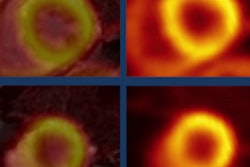Dear AuntMinnie Member,
In our MRI Community this week, we're highlighting disturbing new findings on the persistence in the environment of gadolinium from MRI contrast agents.
When researchers tracked levels of gadolinium in the waters of San Francisco Bay over two decades, they discovered a sharp increase in environmental gadolinium over the study period. They attributed the rising levels directly to the use of gadolinium-based contrast agents for MRI scans at hospitals in nearby Silicon Valley.
The findings echo other studies that have found gadolinium in coastal and river waters near populated areas. Indeed, some studies have even found trace elements of gadolinium in drinking water.
The new study comes amid rising concerns over the safety of gadolinium, with research showing that the element can persist in the brains of patients for years after they have received MRI scans. Learn more about the new study by clicking here, or visit the community at mri.auntminnie.com.
News from Arab Health
The Arab Health meeting convened this week in Dubai, United Arab Emirates, and we're bringing you daily coverage in our AuntMinnie Middle East special section.
First up is an article by contributing writer Inga Stevens on Saudi Arabia's national breast screening program. The initiative was launched in 2012, and the director of the program presented a report card on its progress to date.
Saudi Arabia has learned important lessons from the program's early years, lessons that can be applied as breast screening is expanded throughout the country -- and indeed throughout the Middle East region. Learn more by clicking here.
Check back in the community at middleeast.auntminnie.com for more updates this week from Arab Health 2016.
Personnel and IT issues
Next up in our Imaging Informatics Community is an article on the personnel issues to consider if you're debating whether to adopt a deconstructed imaging platform, such as with vendor-neutral archives and enterprise-wide viewers. Such a move can have personnel implications that you should consider, according to an article contributed by personnel recruiting and consulting firm Skinner and Associates. Read more by clicking here.



.fFmgij6Hin.png?auto=compress%2Cformat&fit=crop&h=100&q=70&w=100)




.fFmgij6Hin.png?auto=compress%2Cformat&fit=crop&h=167&q=70&w=250)











